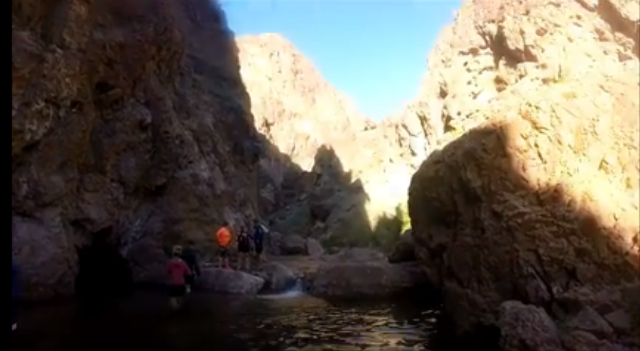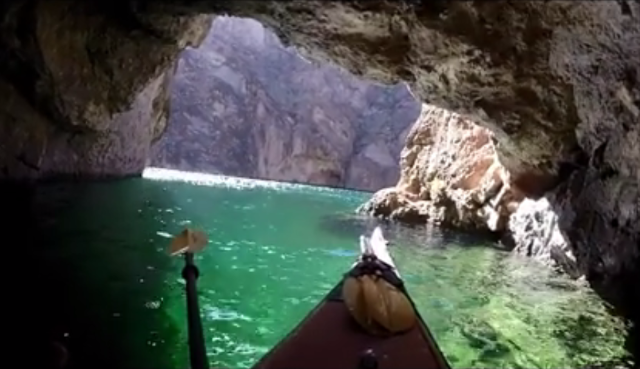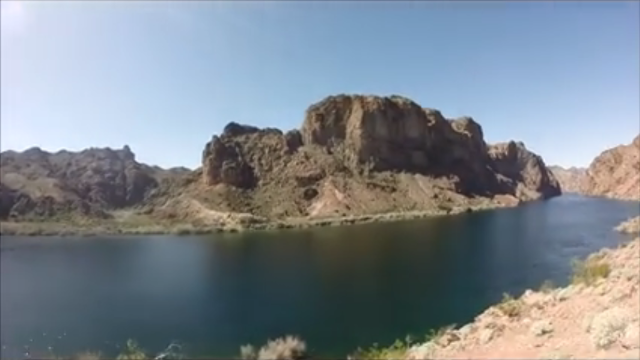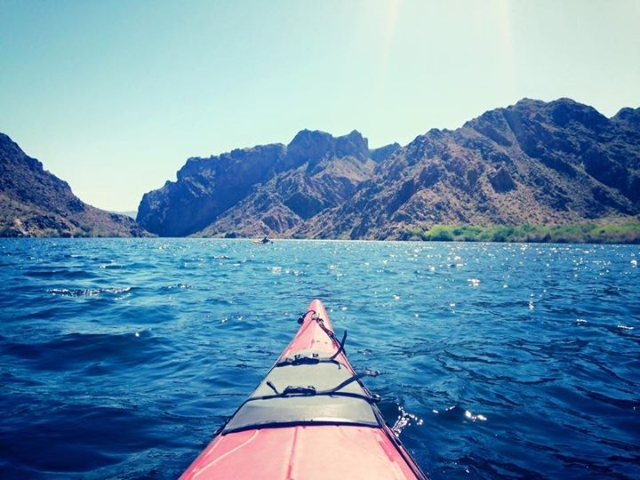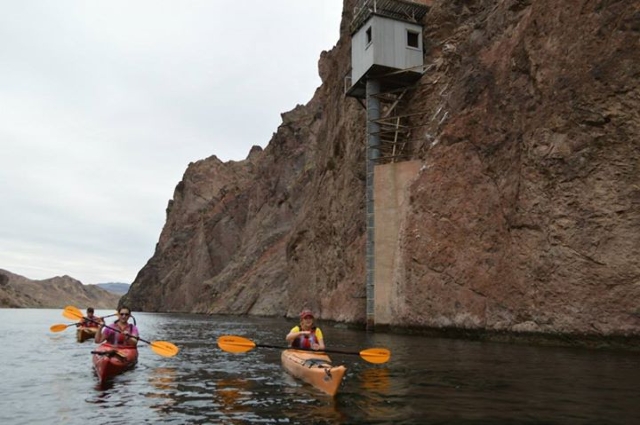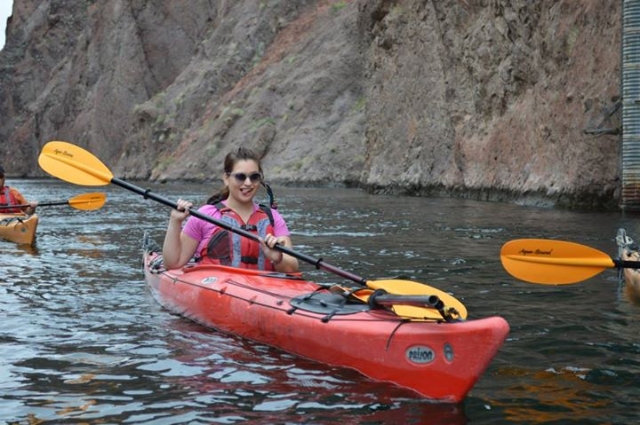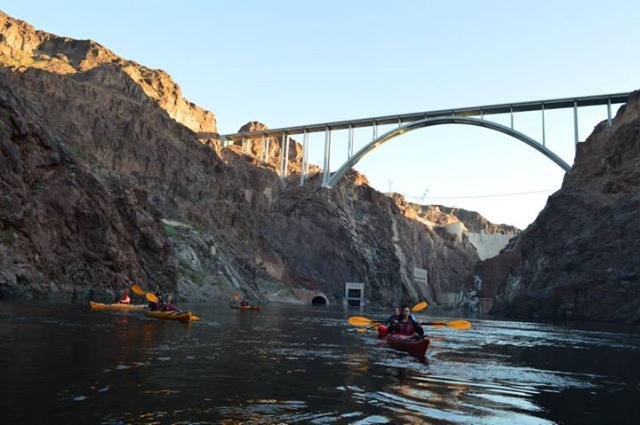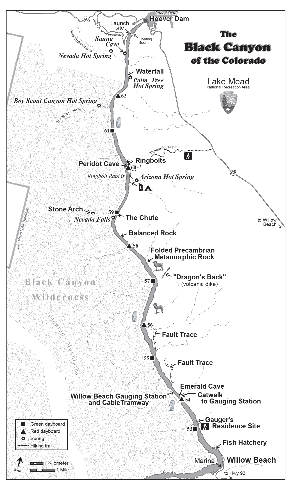7 gorgeous reasons to explore Black Canyon
The Black Canyon. While it may bear a rather ominous name, the 12-mile stretch of cool water running between Willow Beach and Hoover Dam boasts a unique abundance of wildlife, history, and scenery.
While many Nevadans have trekked out to the Hoover Dam and viewed the Colorado River running steadily below it, the waters of the river are still largely unexplored for most locals. A journey to the easily accessible marina at Willow Beach will offer travelers passage to the canyon. The waters run flat and steady, so even novice paddlers (or rowers or boaters) will be able to venture upstream and gain passage to hidden caverns, otherworldly hot springs, and secluded beaches.
Rent A Boat The marina at Willow Beach offers boat rentals for both beginners and those more experienced. Canoes and kayaks are available starting at $10 for two hours. And assorted fishing and deck boats are offered for those who don't want to invest in the manpower to paddle. There are over a dozen local outfitters who will proudly offer guided tours, along with rentals for novices who desire a more experienced approach.
Arizona Hot Springs When paddling upstream, Arizona Hot Springs will be on your right at about mile 59 ¾. Secure your boat with rope and hike through the canyon on foot for about a quarter-mile. The trail will lead you through a narrow canyon and require you to scramble a bit over gravel and a warm shallow creek. Eventually the trail will lead you to a metal ladder jutting off a cliff. Carefully scale your way up, and you will find two very hot and very secluded springs.
Goldstrike Hot Springs Continue paddling toward the dam and dock at the beach to enter Goldstrike Hot Springs. These springs can be reached by hiking down from above the canyon. But accessing it by the river means paddling through cool waters rather than hiking between the brutally hot boulders. The current is a little stronger here. So take care to secure your kayak to something sturdy. The hot springs drain into the river so follow the warm water upstream until you find the shallow pools. Be sure to look up. The canyon walls ascend on all sides, shielding you from the sun, and creating pretty little waterfalls.
Sauna Cave Just before you paddle all the way up to the dam, you can exit your kayak and hike up to the sauna cave. The cave was discovered during the construction of the Hoover Dam. Workers began drilling a tunnel, but had to abandon the site when they found pressurized water in excess of 122° F. The sauna cave is marked by tamarisk bushes at the entrance. Wade into the knee-level water at the beginning of the cave. You can walk about 100 feet back before the tunnel terminates. Inside, the cave is hot and humid and pitch black. Be sure to bring a flashlight.
Emerald Cave One more cave you'll want to be sure to check out is the Emerald Cave, just shy of mile marker 54. The cave is small, maybe one story high and wide enough to accommodate a dozen kayaks. But what lends this cave its name is the way the shadows of the cave play with the crystal clear water. Back up into the cave, and look out toward the river. The water will appear to glisten is a spectacular, shimmering green.
Historical Sites Just south of Emerald Cave, look up on the east side of the cliff. You'll see a small shed sticking out of the cliff side with only an old ladder reaching down to the waters below. This little shack used to be the office of an old river gauger. Look west and you'll notice a cable stretching across the canyon and a wooden catwalk built into the rock.
Prior to construction of the Hoover Dam, one man, whom local lore likes to refer to as “Bob,” spent ten years living in the canyon. His sole purpose was to determine if this area was a suitable place to build the dam. And because this was long before the days of modern telemetry, he had to measure this manually. So every day, he would trek down the wooden catwalk, secure himself on the cable car and zip line across the river into his office. Once there, he would measure the level of the water and study samples of the silt and water.
“Bob” lived one mile south, near mile marker 53. Look up at the overlook and you'll notice a wall of smaller rocks. These are the ruins of the house where he lived for the ten years. This beach makes a great place to dock, stretch your legs, and explore. A small commemorative plaque marks and explains the ruins. And the overlook makes a perfect spot to pose for a picture.
For ten years, the River Gauger lived in that canyon, making that perilous journey everyday so that the dam could be built. And, as we know, the dam ended up instead being constructed ten miles north, rendering his efforts obsolete.
Further north, near mile marker 60, look to the Arizona side of the canyon and you'll notice metal ring bolts jutting out of the canyon wall. When the Dam was still being constructed, the river flowed fast and aggressively and was characterized by its rapids. When supplies had to be brought up river, workers would tie their rafts into the bolts and pull themselves through the canyon.
Hoover Dam Even if you've seen the Hoover Dam before, you've never seen it like this! Make your way upstream from Willow Beach, and you'll find yourself at the base of this famous landmark. A barrier will prevent you from actually being within arm's reach, but at about fifty yards away, you'll be able to fully appreciate the magnitude and beauty of this decade's old feat of engineering.
Janna Karel is a tour guide in Las Vegas and a seasoned international solo traveler. Contact her on twitter @jannainprogress



